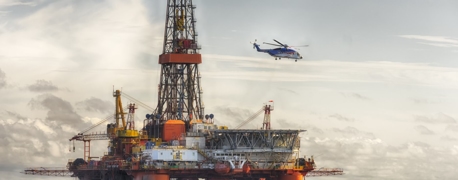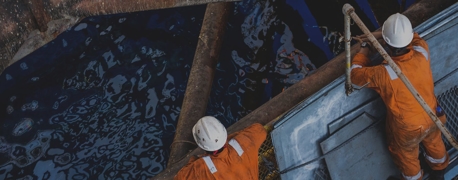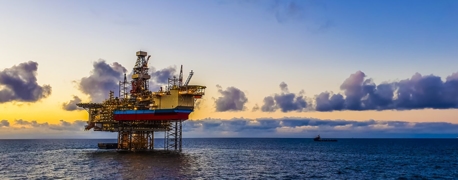Is Bigger Better? Mega Container Ships Push Maritime Boundaries

Integral to global commerce, cargo ships transport an estimated 80% of goods across the planet. Through the years, these vessels have only increased in size, power, and range. Yet, as these behemoths cross the world’s oceans, the question arises: do the benefits of increased capacity outweigh the inherent risks mega-ships present to maritime workers, the environment, and the industry itself?
More large container ships are in service today than ever before. These massive vessels may reach over 1,300 feet long and 193 feet wide and can carry 14,000 twenty-foot equivalent units (TEUs) or more.
The world’s biggest cargo ship is the MSC Irina, which was put into service in 2023, has a capacity of 24,346 TEUs and measures approximately 1,312 feet in length and 201 feet in width. This is a far cry from the first container vessel, the SS Ideal X, which carried 800 TEUs after being converted from a World War II oil tanker in 1955.
Today’s container vessels range in size and capacity:
- Feeder: Up to 1,000 TEUs. Length and width vary with smaller regional operational requirements.
- Feedermax: 1,000 to 2,000 TEUs. Slightly larger dimensions to accommodate more containers.
- Panamax: 3,000 to 5,000 TEUs. Maximum dimensions of 965 feet (length) and 106 feet (width) to fit through the original Panama Canal locks.
- Post-Panamax: 5,000 to 10,000 TEUs. Exceeds original Panama Canal dimensions; sizes vary.
- New Panamax: 10,000 to 14,500 TEUs. Designed for the expanded Panama Canal, with a maximum length of about 1,201 feet and a width of 161 feet.
- Ultra Large Container Vessels (ULCVs): Over 14,500 TEUs, reaching up to more than 20,000 TEUs. These vessels exceed 1,312 feet in length and 194 in width.
- Malaccamax: Up to 18,000 TEUs, designed to navigate the Strait of Malacca. Length up to 1,312 feet and width constrained by the Strait's depth.
- Megamax: More than 20,000 TEUs, pushing the limits of current engineering capabilities. Length can exceed 1,312, with widths approaching or exceeding 194 feet.
Recent Container Ship Accidents
With so many large container vessels in service, the maritime industry has witnessed an uptick in accidents involving these mega-ships.
On March 26, 2024, tragedy struck at the Francis Scott Key Bridge in Baltimore when the Dali, a Singapore-flagged container ship measuring 984 feet in length, issued a mayday alert moments before colliding with a support pillar.
The bridge collapsed into the Patapsco River, shortly after the vessel, which had recently departed from the Port of Baltimore, experienced a loss of power. The aftermath saw several vehicles, alongside a construction crew working on the bridge, plunged into the cold river. Two were rescued, one facing severe injuries, while six construction workers remain missing.
Another significant container ship accident in recent history involved the MV ONE Apus. On November 30, 2020, while en route from Xiamen, China, to Long Beach, California, the Ultra-Large Container Vessel encountered severe weather that led to a container stack collapse.
1,816 containers were lost or damaged, marking it as one of the largest shipment losses without the total loss of the vessel itself. The financial repercussions were staggering, with estimated losses ranging from $75 to $150 million. This disaster displayed not only the financial implications but also the environmental risks and challenges in salvage operations posed by such large-scale losses at sea.
Other notable incidents involving mega-ships include:
- ONE Aquila: On October 30, 2020, the ONE Aquila suffered a container stack collapse during a storm en route from Yantian, China, to Long Beach, California. This incident led to at least 100 containers falling overboard.
- Maersk Essen: The Maersk Essen encountered severe weather off the coast of Japan on January 16, 2021, while traveling to Los Angeles from Xiamen. The vessel lost 750 containers due to the storm, some of which were damaged or thrown overboard.
- Maersk Eindhoven: On February 17, 2021, the Maersk Eindhoven experienced a temporary loss of engine propulsion off the coast of Japan. The incident caused 260 containers to roll overboard and damaged another 65.
- Ever Given: Perhaps the most widely publicized incident, the Ever Given, one of the world's largest container ships, became lodged in the Suez Canal on March 23, 2021. The vessel was stuck for six days, causing a significant disruption in global trade. While there was no cargo lost, the incident spotlighted the logistical and economic impact of mega-ship accidents on the global supply chain.
The Hazards of Larger Vessels
Driven by the allure of economies of scale and competitive advantages, the push towards ever-larger cargo ships has introduced a host of complex challenges and risks to the maritime industry. While the benefits of these enormous vessels are advertised in terms of cargo capacity and efficiency, the ramifications of their massive size can impact not just shipping companies and their crews but also port infrastructure, the environment, and global supply chains.
Let’s take a closer look at the impact—and potential disadvantages—of ultra-large vessels.
Navigational Challenges & Maneuverability
Mega-ships such as the Ever Given, which famously blocked the Suez Canal, represent the navigational challenges and maneuverability issues that come with such enormous vessels. The sheer length and width of these ships limit their operational flexibility, making them more susceptible to accidents in narrow passages or during adverse weather. The Ever Given incident not only highlighted the difficulties in steering and controlling these giants but also accentuated the potential for massive disruptions in global trade routes due to accidents in critical chokepoints like the Suez Canal.
Bigger Size, Bigger Impact
The sheer size and weight of a container vessel make any collision or allision far more disastrous. Take the incident involving the Dali, for example. As caught on video, the container ship struck the Francis Scott Key Bridge with such force that a portion of the 1.6-mile-long bridge collapsed completely. Its highest registered speed before striking the bridge was 8.7 knots, but it slowed before impact. Even so, the collision was devastating.
Port Infrastructure & Logistical Strains
The increasing size of container ships places immense pressure on port infrastructure. Modern mega-ships require deepwater ports, extended quays, and larger cranes for loading and unloading operations. Only a limited number of ports worldwide are equipped to handle these giants, leading to logistical bottlenecks and increased costs for port upgrades and expansions. This infrastructure strain extends to the surrounding transportation networks, where railways and roads must also cope with the surge in cargo volume from each vessel’s arrival.
Environmental & Safety Risks
The environmental impact and safety risks associated with mega-ships are significant concerns. Larger vessels mean more fuel consumption and emissions, albeit more efficiently on a per-container basis. However, in the event of accidents, the environmental damage can be extensive, from oil spills to the loss of containers at sea, which can contain hazardous materials. Furthermore, the increased likelihood of fire in densely packed container stacks poses severe safety threats to crew members and requires sophisticated fire-fighting capabilities onboard.
Economic Implications & Supply Chain Vulnerabilities
While larger cargo ships may offer cost savings on a per-container basis, they also introduce economic risks associated with high upfront investment, higher insurance premiums, and the potential for significant losses in case of accidents—such as the 1,816 containers lost on the ONE Apus. The concentration of cargo on a single vessel also amplifies the financial impact of delays or losses, affecting not only the shipping lines but also the entire supply chain. The Ever Given incident caused significant delays and financial losses across multiple industries, highlighting the universal risks posed by dependency on mega-ships.
Have Container Ships Reached Their Limit?
The era of rapidly increasing container ship sizes may be nearing a plateau, due to several factors. Their construction alone has pushed the boundaries of maritime engineering, reaching what appears to be a practical limit in size due to the significant challenges and diminishing returns of scaling up further. Ports worldwide are already straining under the demands of the current largest ships, requiring costly upgrades to accommodate their depth and width. Moreover, the logistical bottlenecks at key maritime bottlenecks, such as the Suez and Panama Canals, impose natural restrictions on vessel dimensions.
Additionally, mega container ships pose operational challenges because of their sheer size. The structural integrity of these giants faces increased risks from phenomena like parametric rolling, for example. This is a dangerous, dynamic type of ship rolling motion that can occur in certain sea conditions, particularly in head or stern seas. This phenomenon is most commonly associated with container ships and other vessels with a high length-to-beam ratio. Parametric rolling is characterized by sudden and severe rolling motions that can develop with little to no warning, posing significant risks to vessel stability, cargo security, and crew safety.
Economically, the viability of pursuing even larger designs is thrown into question by the soaring costs of fuel and by the logistical nightmares posed by the potential for significant cargo losses in adverse weather conditions. With the current global fleet already capable of moving vast quantities of cargo, the focus should shift from size to efficiency, sustainability, and safety.
Balancing Maritime Commerce and Safety
As the maritime industry pushes the boundaries of ship size, vessel owners and operators must consider the safety of crew and the environmental implications of these giants. The integration of advanced navigation technology, rigorous safety standards, and enhanced crew training are steps in the right direction, but as the maritime industry evolves, so too must the regulations and safety protocols that govern these leviathans.


